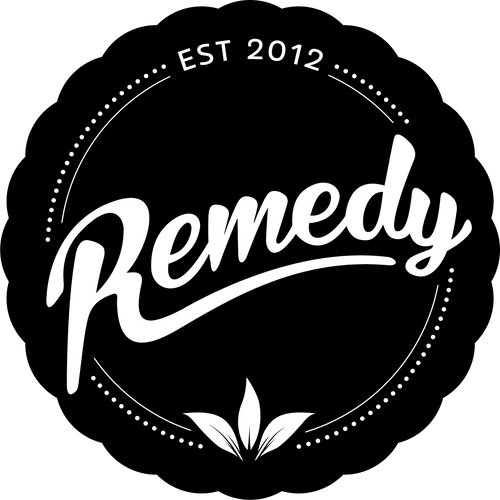Sustainability is thrown around a lot as a bit of a buzz word these days.
It’s why we’re on a bit of a sustainability journey here at Remedy. We think we’ve always done a pretty alright job – recycling, composting, lights off at the end of the day. Pretty simple stuff, really.
But we know we need to do better, which is why we’ve been working hard to make changes that’ll actually make a difference.
We know we’ve got a ways to go, but we wanted to share the pretty cool things we’ve been doing and how we’re going to keep working toward being the most planet-friendly we can be.
Conscious ingredient sourcing
We're obsessed with making the best tasting booch going round, and that starts with sourcing the best possible ingredients, in the best possible way. Our fresh ginger is crushed on site, and when we say fresh, we mean freeeesh. Sometimes it's only been out of the ground for 3 days before it's in our bottles and cans.
We also source the Kakadu plum, a native Australian fruit about the size of an olive or cherry, that goes into our cherry plum kombucha from the Palngun Wurnangat Association (PWA). The PWA is an indigenous women's organisation based in Wadeye, about 380km south west of Darwin in Australia's Northern Territory.
5 star green rated fermentary
Okay, but what does a “5 Green Star rated fermentary” actually mean?
Great question! Let’s start with the basics. The place we make all our tasty Remedy bevs is known as a fermentary, mostly because we make fermented drinks. It’s kind of like going to a distillery for your spirits or a brewery for beer, it’s just our version of “the place we make our fermented drinks”.
In September 2022, we moved into our new fermentary in Dandenong South, Melbourne, Australia and we’re pretty chuffed to say we have been awarded a 5-star green-rated label for this site. Some of the features that go into achieving this are:
- 1.1MW solar power system to reduce energy usage from the grid (almost our whole roof!)
- Rainwater harvesting for appropriate grey water use (such as toilets, etc.)
- Water-saving features such as air rinsing for our bottles
- Sensor-controlled LED lighting and timers on heating to reduce electricity throughout the site
- Repurposing organic waste like tea and SCOBY through a third party to produce renewable energy and organic fertiliser
Speaking of that last point…
Organic waste recycling
“Organic waste” sounds a bit funky… Like something you don’t want your makers-of-delicious-drinks to be producing. But never fear, we’re just talking about our tea leaves, SCOBY, fresh ginger remnants – any organic waste that comes from making fermented tea.
We work with the legends at Waste Ninja to recycle all this organic waste. Here’s how it works.
Our organic waste is collected from our fermentary and put through a process called anaerobic digestion. If you’re not 100% sure what that means off the bat, put simply, it’s a sustainable and environmentally friendly process that transforms food waste into electricity. Kind of like Cinderella’s carriage/pumpkin at midnight… but instead of magical fairy dust, it’s science.
In this biological process (more science, sorry!), microorganisms break down organic materials in the absence of oxygen, producing biogas as a by-product. This biogas, primarily composed of methane, can be captured and utilised as a renewable energy source.
This is where it gets super cool! The energy (aka electricity) produced is sent to the power grid so those Aussies down in the state of Victoria can put more meat pies and sausage rolls in the airfryer (or whatever they're using their power for down there).
For every tonne of organic material processed, enough electricity is generated to power around 22.9 homes for a day.
So what's next in Remedy's sustainability journey?
While our cans are already 100% recyclable, we're on a journey to make all our packaging recycled too. Remedy even holds a ‘Beyond Best Practice’ position with APCO, the Australian Packaging Covenant Organistion.
We're working with suppliers to make our PET bottles 100% rPET (that R stands for recycled). While we're faced with the challenge that appropriate materials to use in our amber bottles is hard to come by, and there is a lack of existing infrastructure with local packaging suppliers, those are challenges we're willing to face. While it poses some difficulties, it's important to keep our booch in amber bottles as the darker material helps to protect the live cultures inside, keeping them strong, healthy, and happy. We're working with our suppliers to make our rPET dreams a reality.

